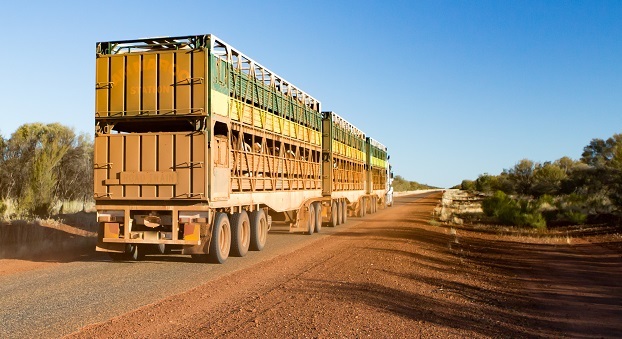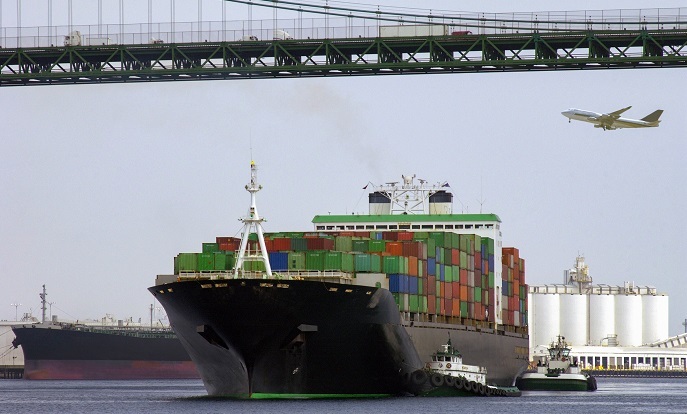
 Data Structure
Data Structure Networking
Networking RDBMS
RDBMS Operating System
Operating System Java
Java MS Excel
MS Excel iOS
iOS HTML
HTML CSS
CSS Android
Android Python
Python C Programming
C Programming C++
C++ C#
C# MongoDB
MongoDB MySQL
MySQL Javascript
Javascript PHP
PHP
- Selected Reading
- UPSC IAS Exams Notes
- Developer's Best Practices
- Questions and Answers
- Effective Resume Writing
- HR Interview Questions
- Computer Glossary
- Who is Who
What is the full form of FOR?
Introduction
Freight on the Road (FOR) refers to transportation of goods via road. It uses commercial vehicles such as trucks and vans for transportation purposes. This mode of transportation is used for short to medium distances.

It is also considered to be the most important part of the logistics industry. Freight on the road is used to transport various types of goods such as raw materials, pharmaceuticals and finished products.
Significance of FOR in logistics
Freight on the road holds great significance in the logistics industry to transport goods. There are numerous reasons why freight on the road is considered important
Accessibility Transferring goods via road is very easy. It enables the transportation of goods in the remotest of areas.
Versatility Transporting goods via freight on the road provides versatility as it allows the transfer of various goods such as hazardous products, oversized cargo and perishable goods needed in our daytoday lives.
Doortodoor service The goods can be delivered and picked up from the doorstep. It makes the experience convenient for the end consumer and eliminates the need for an intermediary. The elimination of intermediaries reduces the chances of damage because of improper handling.
Reliability It is considered to be the most reliable mode of transportation as it offers faster transit. Freight on the road is the best option for timesensitive shipments.
Coste ffective It is costeffective for short and medium distances. It is cheaper than other modes of transportation such as air and sea freight.
Security Freight on the road is considered a safer option due to the presence of a surveillance system, GPS tracking and tamperproof locks.
Employment It employs people such as drivers, support staff and mechanics. It contributes to the global workforce and the growth of the economies.
Speed and flexibility It is fast as it provides timely shipment and can be customised according to the needs of the customer. Businesses can alter the requirements according to the needs
Types of FOR
The types of freight depend on the nature of the goods being transported. Each freight has different requirements and it needs to be understood for efficient transportation.
General freight The transportation of general freight is done by standard commercial vehicles such as trucks, vans etc. It doesn't require special handling as it transports nonperishable goods i.e. electronics, textiles etc
Perishable freight The goods with short shelf life are taken in this freight such as dairy, fresh products etc. It requires special handling, cold storage etc.
Hazardous material freight Chemicals, explosives, radioactive materials and flammable materials are transported in this freight. Such products pose a threat to human life and the environment. These goods require special equipment and transit permits.
Specialised freight It includes goods like artworks, antiques and musical instruments. These goods require special handling, packaging and storage.

E-commerce freight The goods purchased online such as clothing, household items and electronics are transported via it. As ecommerce platforms are growing, the need for transporting these goods has become more important. They also require tracking systems for timely delivery.
Reefer freight Frozen food and other stuff which are needed to be temperature controlled are taken through these freights. They are transported in refrigerated trailers to prevent spoiling.
Flatbed freight It transports the goods which require open air such as heavy machinery, and building materials. The goods are unloaded by cranes.
FOR vs other modes of transportation
Freight on the road is one of the numerous methods of transportation. Every method has different advantages and disadvantages according to business needs.
Freight on road vs sea transport Sea cargo is ideal for long distances where the volume of goods to be transported is large. It is costeffective for bulk goods. But it is very slow as compared to the Freight on road and doesn't assure timely delivery. Whereas. freight on the road is fast, costeffective and provides timely delivery
Freight on road vs rail transport It is an efficient way of transporting heavy metals, coal etc. It is also ideal for long distances. It is less flexible as compared to the freight on the road. Rail transport also requires intermediary handling which increases the shipping time. But freight on the road offers faster transit.
Freight on road vs air transport Air transport is very expensive and can carry only limited goods. Air transport is a great option for timesensitive goods. It offers large coverage. Compared to it, freight on the road is more costeffective.
Conclusion
Freight on the road is best for the business looking for transporting goods from one place to the other. It offers faster transit, direct delivery options, and greater flexibility. As the technology is advancing the goods can be tracked with GPS. Freight on the road offers lastpoint connectivity. But businesses have to consider their needs before opting for any freight options.
Frequently Asked Questions
Q1. What are the points a business should consider before taking freight on the road as a transportation option?
Ans: The business should consider points like their budget, timesensitive delivery, and distance needed to cover before deciding on the freight option. This will help to find the most effective and efficient way to deliver goods.
Q2. How has technology impacted freight on the road?
Ans: With the advancement of technology, it is easier to track goods with GPS. The other option is electronic logging devices which monitor the driver's hours of work. It will enable businesses to efficiently optimise their resources.
Q3. How does freight on the road help in the growth of an economy?
Ans: Freight on the road is a costeffective method which provides job opportunities to many people. It provides jobs to the drivers, intermediary service handlers and mechanics which in turn increase the GDP of a country.

